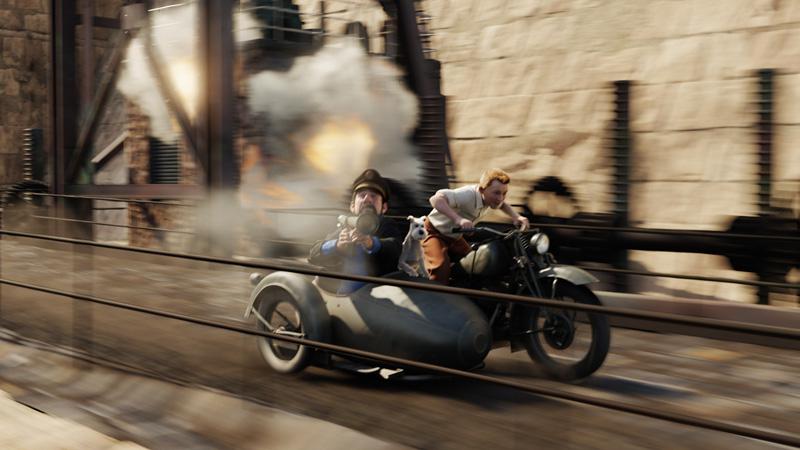Critics have been divided on many aspects of Tintin: whether the animation successfully straddles the uncanny valley, whether the motion-capture stars shine through the CGI, and even whether its depiction of alcoholism is appropriate for children. But nearly everyone seemed to agree that the Morocco chase sequence—in which characters including Tintin, his dog Snowy, and a falcon all tumble over each other down a laundry line and through the Moroccan streets—is thrilling. Kristopher Tapley even called it “the most exciting set-piece Spielberg has ever conceived and accomplished,” which is a bold claim about a guy that directed the T-Rex chase in Jurassic Park, the final shark vs. boat showdown of Jaws, and everything in Raiders of the Lost Ark.
Nearly as often as the scene was praised, however, the plaudits were undercut by how the sequence’s “long take” style—it’s goes a few minutes without any cuts—was made possible only through CGI, and so wasn’t as impressive as other examples of the technique. But what if that unimpressiveness is precisely what makes it great?
The long take has traditionally been the territory of a small set of celluloid auteurs, often zealous film theorists or great showmen wanting to one-up the next guy. Tintin, though, makes me think the technique was meant for animation all along. Long takes at their best immerse viewers in a particular time and place, giving it unbroken attention. Too often, though, the long take is an excuse to show off—to remind you of the director and leave you wondering, “How did they do that?” How did the camera get from the helicopter to the cameraman in the stadium stands? How did they get every club-going extra, rollerskating actress, and snippet of dialogue in sync at exactly the right time? In an animated film like Tintin, however, there’s no mystery—they just did it with computers! So the camera can dip and dive and fly through walls without distracting the viewer with mechanics.
It makes sense that Spielberg would be one to demonstrate this: Though he’s often accused of being showy, the director generally has used long takes to immerse viewers in a scene rather than wow them with the fact of his own mastery. As early as his first feature film, Spielberg was using long takes that are potently unostentatious. One of his showiest appears in Duel, but it involves little more than an exhausted man walking into a bar to wash his face (the clip is embedded below). Similarly, Quint’s iconic recounting of the sinking of the USS Indianapolis in Jaws is filmed almost entirely without cuts, but you’re probably too spellbound to notice. (I noticed at least one long take in War Horse, but it occurred only during an especially suspenseful discussion of jam.)
If animated movies in the past have included a long and estimable tradition of long takes, no one seems to have noticed. Slate film critic Dana Stevens reminded me of a long horizontal pan in Fantastic Mr. Fox, and we came up with two others that seem somewhat comparable: the intergalactic zoom-out that opens Contact, and the recent descent through the clocktower in Hugo, both of which are heavily reliant on computer-generated imagery. But that’s all we’ve found so far. If we’ve missed any, please let us know in the comments. Of course, the fact that we may not remember such scenes as “long takes” might be exactly what makes them great.
